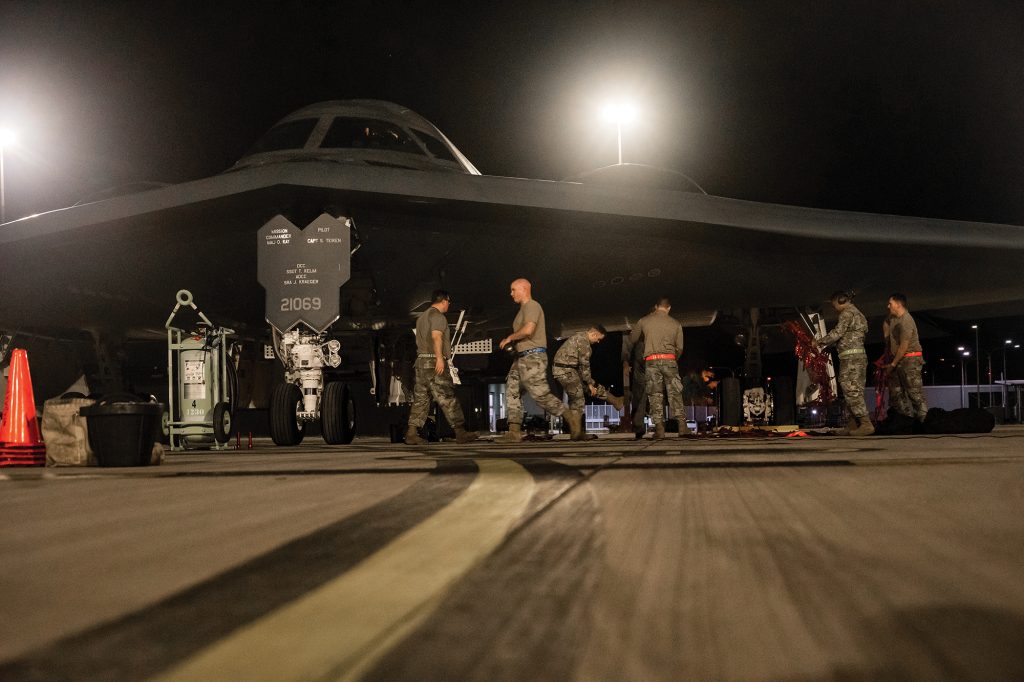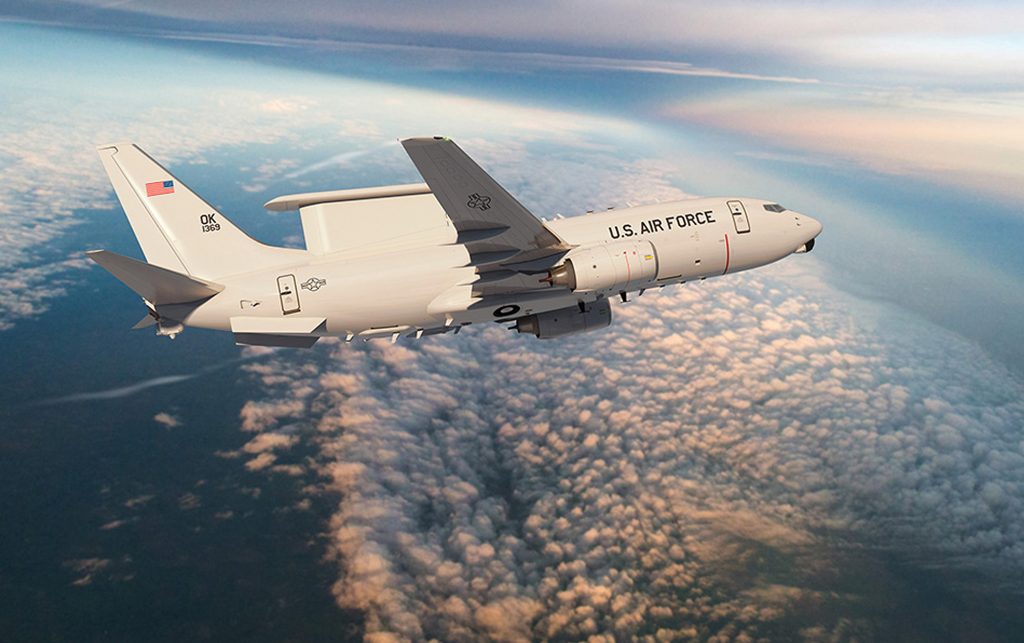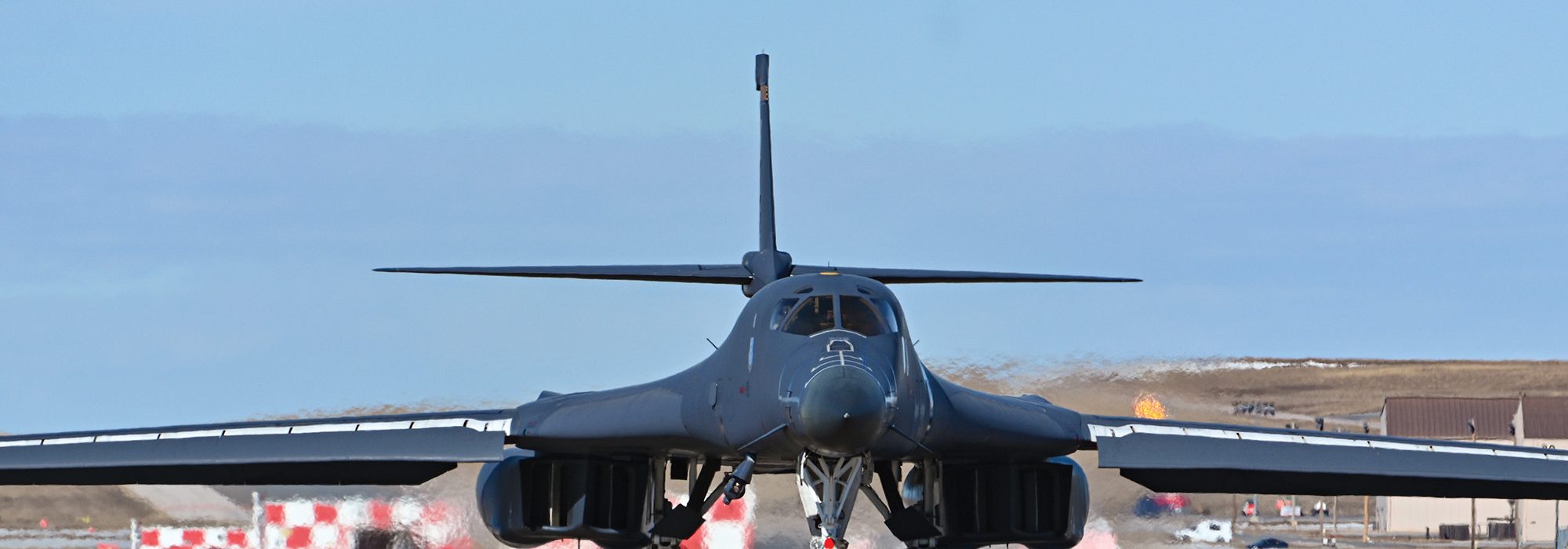B-1 Bombers from Ellsworth to Grand Forks
USAF plans to relocate B-1s in 2025.
By Unshin Lee Harpley
The Air Force is planning to relocate 17 B-1 bombers from Ellsworth Air Force Base, S.D., to Grand Forks Air Force Base, N.D., for 10 months starting early next year, as Ellsworth gears up to host the incoming B-21 Raider.
Air Force Global Strike Command is proposing the move from February to November 2025, a spokesman said in an email statement to Air & Space Forces Magazine on Aug. 19.
The final relocation decision hinges on an ongoing environmental review that is evaluating the impact of moving the aircraft and personnel to Grand Forks. If the review is favorable, Ellsworth plans to send around 800 Airmen along with the Lancers to provide maintenance and support for the bomber operations.
“The B-1s will continue to fill their operational requirements to the President and the Secretary of Defense while at Grand Forks,” the spokesman noted in the statement.
The proposal hints at progress in the Air Force’s plan to start fielding the new B-21 Raider. After Ellsworth was selected as the initial operating base and training unit for the new stealthy bombers, the base began construction on a 95,000-square-foot Low Observable Restoration Facility in 2022 to support the bomber. According to budget documents, additional facilities at the base are expected to be completed by the end of this year.
In July, Lt. Gen. Andrew Gebara, deputy chief of staff for strategic deterrence and nuclear integration, confirmed that B-21s are coming to Ellsworth “very soon” and that the program remains on schedule.
“The good news is the B-21 is succeeding, it’s in flight test,” Gebara said during an event with AFA’s Mitchell Institute for Aerospace Studies on July 15. “I always caution people to say it’s early in flight test, so I will be happy when I see it flying into Ellsworth for the first time. I have these visions in my head of B-21s flying over Mount Rushmore and circling to land, and I can see it happening. It’s going to happen before we know it, very soon, but it isn’t there yet.”
In May, the Air Force and Northrop Grumman unveiled new photos of the B-21, providing the first official images of the highly secretive bomber in flight. These photos, offering some new details about the aircraft, show the bomber at Edwards Air Force Base, Calif. Since its initial flight at the manufacturer’s California facility in November, the bomber has been conducting test flights from the base.
The service recently told Air and Space Forces Magazine that the new bomber aircraft will not necessarily replace the B-1 and B-2 on a one-for-one basis as new bombers become available. However, Global Strike Command has indicated it does not expect to have the resources to field four types of bombers simultaneously. The goal is to narrow the fleet to B-21s and B-52Js after the B-1s and B-2s retire.
Grand Forks has previously served as a cornerstone of U.S. bomber operations. Beginning in 1963, the base housed B-52 bombers under the 319th Bomb Wing until it transitioned to B-1 missions in 1986. It played a key role in the nation’s nuclear deterrent until 1994, when the last B-1s departed and the wing was redesignated as the 319th Reconnaissance Wing. The base today focuses on ISR missions with unmanned aerial vehicle operations including the RQ-4 Global Hawk.
B-2 Bombers Back in Australia After Two Years

By John A. Tirpak
Three B-2 stealth bombers landed at Royal Australian Air Force Base Amberley in August to begin a Bomber Task Force deployment—showcasing U.S. presence in the region and conducting exercises with allied nations. The bombers were accompanied by two KC-135R tankers from the Illinois National Guard.
The last time B-2s were in Australia was in the summer of 2022. More recently, the stealth bomber deployed to the Indo-Pacific earlier this summer, landing in Guam for the first time in five years.
Neither Air Force Global Strike Command nor Pacific Air Forces announced how long the trio of B-2s will stay in Australia, but Bomber Task Forces typically last two to three weeks, with training events with allies in the area to practice interoperability and secondary deployments to other locations to gain experience operating from airfields unaccustomed to supporting a bomber presence.
The B-2 deployment is just the latest display of U.S. airpower in the region. Last week, Air Force F-22 stealth fighters deployed to Brunei, Indonesia and the Philippines, making a similar show-of-force in the region. All three countries have long-simmering disputes with China over boundaries in the South China Sea.
The deployment was not announced in advance, but Defense Secretary Lloyd J. Austin did hint at it earlier in August after the U.S.-Australian defense ministerial conference.
“We’re increasing the presence of rotational U.S. forces in Australia,” Austin said at the time, to include “more maritime patrol aircraft and reconnaissance aircraft operating from bases across northern Australia. It will also mean more frequent rotational bomber deployments.”
RAAF Amberley is on Australia’s east coast, near Brisbane.
Pacific Air Forces released a statement saying the bombers are from the Active-duty 509th Bomb Wing and Guard 131st Bomb Wing, both at Whiteman Air Force Base, Mo. A video posted by the DOD identified two of the aircraft as being the Spirit of Arizona and Spirit of Indiana, both from the 393rd Bomb Squadron.
A third B-2 arrived later, according to an Air Force official, and was not immediately photographed or identified by DOD. PACAF did not say how many Airmen traveled to Australia to support the task force.
“This deployment is in support of Pacific Air Forces’ training efforts with allies, partners, and joint forces and strategic deterrence missions to reinforce the rules-based international order,” PACAF said.
The last time B-2s deployed to Australia was in July 2022, when they also operated from RAAF Amberley. The bombers took part in the bilateral Koolendong 22 exercise and conducted drills with Australian F-35As.
The RAAF’s F-35As also exercised with B-2s at Nellis Air Force Base, Nev., in January, when both types participated in a Red Flag exercise. That event marked the first time RAAF F-35As participated in a Red Flag at Nellis.
Reuters has reported the U.S. and Australia may be seeking to build facilities at RAAF Tindal, in the Northern Territories, to support deployments of up to six B-52 bombers and associated refueling aircraft.
At the U.S.-Australian defense ministerial, the two countries also announced plans to expand defense cooperation, exercises, and production of weapons. At a May meeting that included Japanese defense officials, the three countries announced plans for new trilateral joint exercises, to include Bushido Guardian—an F-35 wargame which will be held in Japan—and Pitch Black, a regular large-force exercise in Australia. They also agreed to conduct live-fire exercises in Australia in 2027.
In the Indo-Pacific, F-35s are operated by the U.S., Australia, Japan, South Korea, and Singapore.
Air Force, Boeing Ink $2.5 Billion Deal for First E-7s

By Chris Gordon
The Air Force has ordered its first E-7A Wedgetail battle management and command and control aircraft, announcing Aug. 9 it has agreed to a deal with Boeing worth $2.56 billion for two platforms. The service says the deal is for “operationally representative prototype E-7A weapons systems,” which Boeing plans to deliver in fiscal 2028.
“This agreement is a significant win for our warfighters, paving the way for ensuring the Air Force’s ability to provide advanced airborne moving target indication in the coming years,” Assistant Secretary of the Air Force for Acquisition, Technology, and Logistics Andrew Hunter said in a news release.
The aerospace giant and the Air Force had been hung up on the price for the first E-7As for months, delaying the fielding of aircraft, Secretary of the Air Force Frank Kendall said earlier this year. The Air Force and Boeing agreed to a price last month but the amount was not disclosed. The service and Boeing already had a contract for an unspecified amount to purchase and adapt the aircraft, which was originally designed for the Royal Australian Air Force, to U.S. Air Force requirements.
The E-7A will become the Air Force’s next-generation airborne early warning and control aircraft, which will also provide “moving target indication capabilities.” The E-7A is part of the service’s vision of a DAF Battle Network of connected sensors and shooters in multiple domains to be able to fight across the vast distances of the Pacific, its contribution to the Pentagon’s Combined All-Domain Command and Control (CJADC2) effort. The E-7 will replace the aging E-3 Sentry AWACS, which by the time of its planned retirement toward the end of the decade will have served in the Air Force for half a century.
“Its advanced multirole electronically scanned array radar will enhance airborne battle management, providing improved situational awareness and enabling long-range kill chains with potential peer adversaries,” the Air Force said of the E-7A in the release announcing the deal.
The E-7As will allow the service to ditch its E-3s, which, in addition to having an increasingly obsolete radar, are also based on an 1950s-era airframe design. The E-3 suffers from a lack of parts and maintenance issues, Air Force leaders say. The E-7A is based on the Boeing 737-700 NG commercial airframe, while the distinctive radar is built by Northrop Grumman. The Royal Air Force is also buying the E-7, and the variants of the platform are in service with the Republic of Korea Air Force, Turkish Air Force, and the RAAF.
Hunter said the E-7A is “an exemplar of our ability to leverage and support the expertise and investments of our partners and allies to support our common security objectives.”
The Air Force has had its crews training on Australian E-7s since 2022 through an exchange program that embeds Airmen in the Royal Australian Air Force. The crews were recently put to the test in the joint Pitch Black exercise.
“For us, the purpose is really to get a familiarity of the E-7A Wedgetail from the Australians who have been operating it for a long time,” U.S. Air Force Maj. Oliver Ngayan, 2 Squadron E-7A Wedgetail air battle manager, said in a July 29 news release. “We integrate into their unit to learn how they operate the E-7A and take back that knowledge to develop our own procedures.”
In a statement, Boeing said the contract award includes “life cycle development, training, and support for the Air Force’s E-7A fleet.” For now, the Air Force plans to have a fleet of 26 E-7As. The service said the prototype aircraft will “inform a planned production decision in FY 26.”
In the long term, the Department of the Air Force believes space-based capabilities will increasingly replace AWACS aircraft such as the E-3 and E-7.
